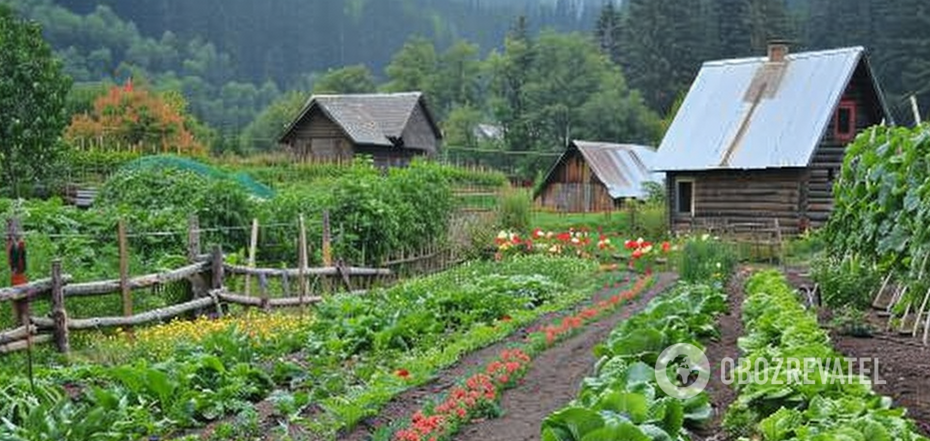Lifestyle
What to do in the garden in May: a cheat sheet for new gardeners
May is the month when the weather is warm and it's time to do all the basic work on your garden. The vegetable garden, the garden, the flower garden, and the lawn need care.
OBOZ.UA asked what experienced summer residents advise to do so as not to miss or forget anything. This list of tasks is worth using, in particular, for beginners who do not yet have their algorithm of actions.
Vegetable garden
In May, strawberries and strawberries need care. Thin out the bed, remove the mustache from the plants. As soon as the bushes begin to produce young leaves, it is important to remove the old greens – they have fulfilled their function and will only get in the way. When the berries bloom, water the bed properly, fertilize, and cover the ground with mulch.
For May planting, be sure to dig up the soil in the beds and the greenhouse. Remove any weeds that have sprouted. Also, clear the soil of last year's plant residue. At this stage, you can apply organic fertilizers that will improve the condition of the substrate and increase yields.
In May, you can sow the second wave of young greens and radishes. It is also a good time to complete all the planned sowing work. Including planting all late crops. But make sure that the weather forecast does not promise more night frosts.
Garden
If the temperature has risen quickly, check your garden for signs of overgrowth. When trees grow too vigorously, it can lead to bark cracking on the trunk and skeletal branches. Such holes can become gateways for infections. Therefore, trees are best protected by furrowing. Use a sharp, sanitized knife to make small cuts in the bark. The distance between them should be about 10 cm, and the depth should be no more than 1.5 mm. The bark from such cuts will diverge gradually, and the wounds will not be deep. Each incision made should be additionally disinfected. For example, a 3% solution of copper sulfate is suitable.
Young seedlings, which also begin to develop intensively in May, are checked for the correct formation of the crown. To do this, determine the angle of the skeletal branches. It should be between 60-85 degrees. If the angle of the branch is less than 45 degrees, it is fixed with a wire stretch to give it the correct position. Old branches that are growing too close to the trunk can be carefully sawed off at the base to about half the thickness, fixed, and wrapped for grafting. This way, the branch will change its position over time.
Also, at this time, you should get rid of wolves and overgrowth on trees and bushes. They only consume resources and do not bring any benefit. They should be removed as early as possible. If desired, cut branches can be used as cuttings for plant propagation.
It is time to plant the cuttings in the ground in May. This applies in particular to grapes and figs. To harden them, take them outside every day before planting, increasing the time spent outdoors every day.
In May, not only plants but also pests become active. Therefore, the garden should be treated with insecticides and fungicides. But first, wait until the fruit trees have faded. Chemicals can kill pollinating insects and thus reduce yields.
Flower garden
In May, all the necessary conditions are in place for planting rhizome and tuberous flowers. Irises, hostas, daylilies, calla lilies, gladioli, and anemones will do well if you move them outdoors. You can also sow annuals such as asters, zinnias, matthiols, or balsam. Petunias and pelargoniums can be planted once the heat is stable.
Primroses, on the other hand, should be dug up in May. The bulbs of crocuses, hyacinths, and snowdrops should be dried. To dig up tulips and daffodils safely, wait until their leaves turn yellow. After that, they should be moved to the shade, where they will spend the rest of the warm season in peace.
Species such as phloxes, chrysanthemums, arabis, herbaceous hibiscus, or clematis should not only be pruned but also propagated. Loosen the soil, place the cut branches in it, fix them well, and water them. The plants should soon take root. But make sure that the soil under them does not dry out.
Flowering shrubs need pruning in May. Last year's shoots are removed from forsythia, spirea, weigela, tree peonies, and viburnum. It is important to do this before these plants begin to form buds or after the flowering season.
If you have a hedge on your property, you should cut it for the first time in May. Very young plants are cut back by almost half. This stimulates them to grow more intensively. Already formed bushes are only trimmed.
Lawn
May is still a good time to plant a lawn. But in this case, it will need to be watered thoroughly and regularly, because the natural moisture level in the soil is no longer sufficient for the grass to develop properly.
To keep your lawn looking well-groomed, sow bald spots and fertilize the plants in May. It is also a good month for the first mowing of the grass. It has already developed enough and will not suffer from shortening.
Subscribe to the OBOZ.UA channels on Telegram and Viber to keep up with the latest events.



























